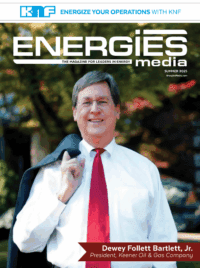A seasoned planning expert shares how solid planning practices bring clarity and stability to fast-changing project environments
The global energy transition is seen as a race toward renewables, batteries, and smart grids. Yet even the best technologies can fail without scalable delivery systems. Projects often stall due to execution issues — blown budgets, unrealistic timelines, logistical gaps, or geopolitical hurdles — not faulty technology.
In this mission-critical space between innovation and implementation lies a discipline that rarely makes headlines: planning engineering. Valentin George Cretu has built a career with the help of this approach.
With over two decades of global experience in mechanical engineering, project controls, and portfolio planning, he has managed infrastructure and energy megaprojects from bid to commissioning in some of the most complex environments on the planet. A Certified Cost Engineer and a member of AACE International and the Association of Planning Engineers, Valentin has led projects across Russia, Kazakhstan, Kuwait, Argentina, the U.S., and France. He is also the author of Planning Engineering: Principles and Memories, a professional reflection on the human and technical dimensions of his field.
But what does that mean for the future of energy? In Cretu’s view, planning isn’t just a supporting function — it’s a form of infrastructure itself. One that determines whether energy innovations reach the grid, the refinery, or the export terminal.
When Energy Projects Fail, Planning Is Often the Missing Piece
Breakthroughs in renewables and smart grids grab headlines and funding, but energy transitions fail without disciplined execution. Without risk awareness, realistic timelines, and cost control, even the most ambitious projects stall or collapse.
As he reflected in his book, “Planning in engineering is the conceptual journey from nothing to something. At its core, it blends art and science—art to envision the goal, and science to transform that vision into a structured plan that convinces you, and others, it can be achieved.”
During his work as Planning Manager on the TotalEnergies-led Mozambique LNG project, he coordinated the integrated project schedule across international contractors, multiple time zones, and unpredictable local conditions. To do it successfully, he designed and maintained risk-adjusted progress measurement systems and cost control mechanisms that allowed the project to stay aligned with budget expectations, even amid volatility.
This strategic groundwork resulted in securing the Final Investment Decision, which unlocked a $5 billion U.S. export contract and led to the creation of over 30,000 jobs globally, including more than 16,000 in the United States. He also served as a crucial liaison with high-level stakeholders, from government ministries to LNG buyers and lenders, translating complex technical realities into actionable decisions.
How Planning Future-Proofs Complex Projects
Energy infrastructure must last decades. True resilience comes from rigorous planning, ensuring systems endure long after the original teams move on.
At TotalEnergies’ Mozambique LNG project, Cretu didn’t just build schedules. He built systems that would sustain execution through volatility — and continue supporting performance long after the initial handover. His framework included risk-adjusted progress measurement, integrated cost tracking, and scenario-based scheduling — tools designed not just for day-to-day control, but for long-term clarity.
“You can’t manage a project of that scale by reacting,” says Cretu. “You need to build in the ability to self-correct — like setting the right autopilot before turbulence hits.”
The planning structure he implemented made it possible to onboard new contractors, adjust to evolving regulatory frameworks, and maintain alignment across stakeholders — even amid geopolitical uncertainty. It wasn’t a single act of recovery, but a sustained operational rhythm grounded in foresight.
Planning Synchronizes Global Execution
Modern energy projects don’t happen in one place. They are global undertakings engineered in one region, fabricated in another, and assembled in a third. Without careful coordination, complexity quickly turns into chaos.
Cretu saw this as Project Controls Lead on ExxonMobil’s Sakhalin-2, managing work across three continents. As one of the largest and most logistically complex offshore oil and gas developments in the Russian Far East, the project involved massive modular construction and coordination between global teams. Engineering was based in Houston, fabrication occurred at the DSME yard in South Korea, and the final hook-up took place in Russia’s remote Far East.
“I felt like a conductor,” he says, “bringing together engineers in Texas, welders in South Korea, and offshore crews in the middle of nowhere in Russia — people with completely different ways of working, thinking, even seeing time. My job was to create a rhythm everyone could move to. And when you see these different worlds align around a shared outcome, it’s an incredible feeling.”
Managing this required Cretu to build and maintain detailed execution plans that factored in intercontinental logistics, seasonal weather constraints, shipping timelines, and contractor coordination across languages and legal systems.
Thanks to this planning framework, massive offshore modules were fabricated and delivered on time and within scope — a rare achievement for projects of this scale and complexity. His work enabled smooth commissioning and helped the project meet its key production targets.
Headline photo: Valentin George Cretu
The CEO of U.S. Energy Media, Emmanuel Sullivan is a technical writer who has built up his profile in the oil and gas industry. He lives and works in Houston, where he publishes Oilman and Oilwoman on a bimonthly basis, and Energies quarterly, distributing the magazine to energy thought leaders and professionals throughout the United States and around the world. At a time when technology is rapidly changing, he provides an invaluable service to oil & gas, and renewable energy executives, engineers, and managers, offering them both broad and specific looks at the topics that affect their livelihoods. Sullivan earned his BA in Communications at Thomas Edison State University and his MA in Professional Writing at Chatham University.





